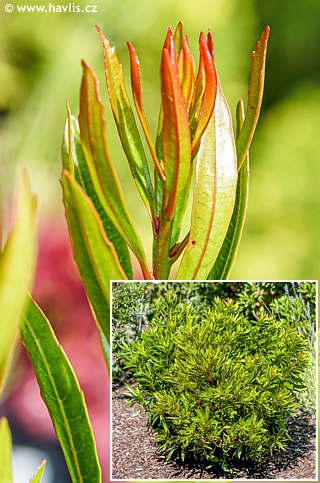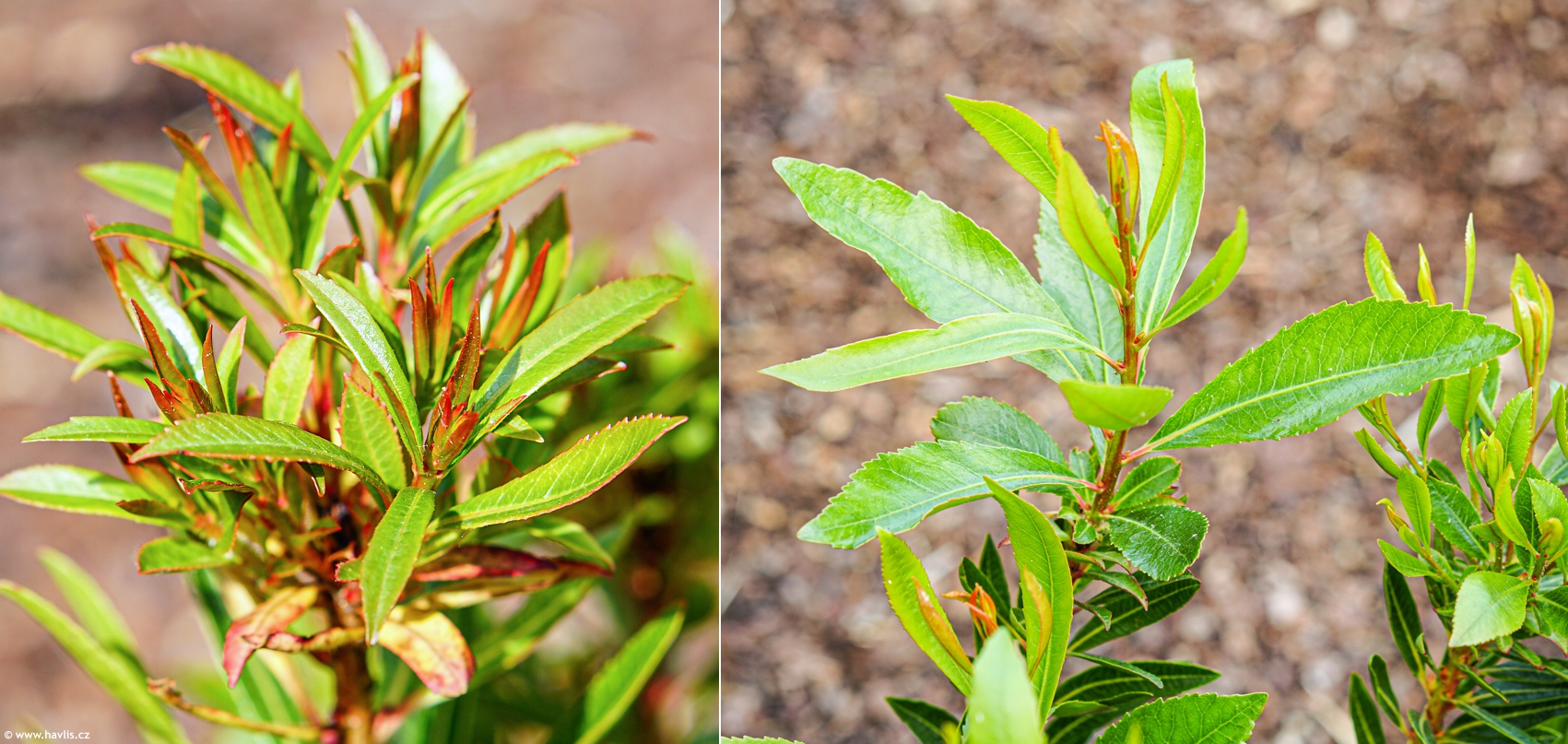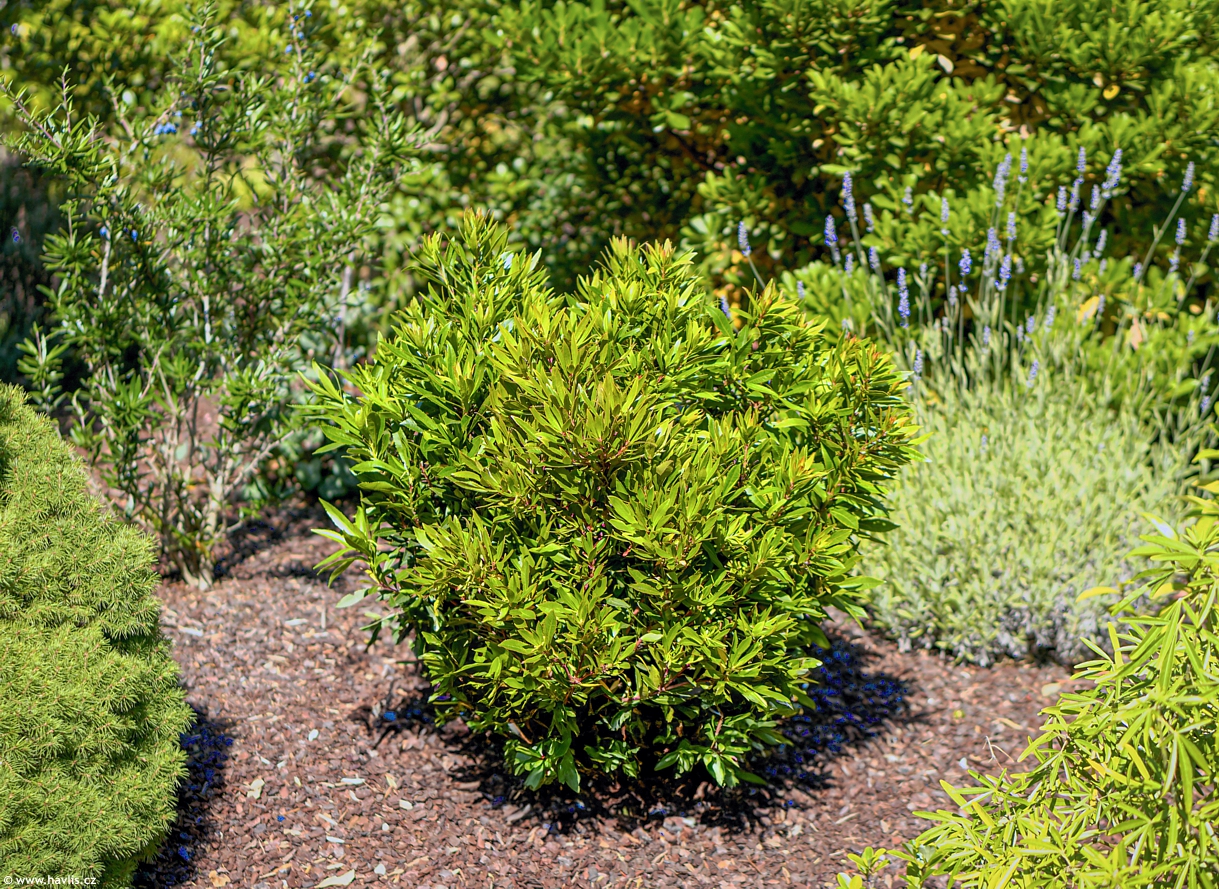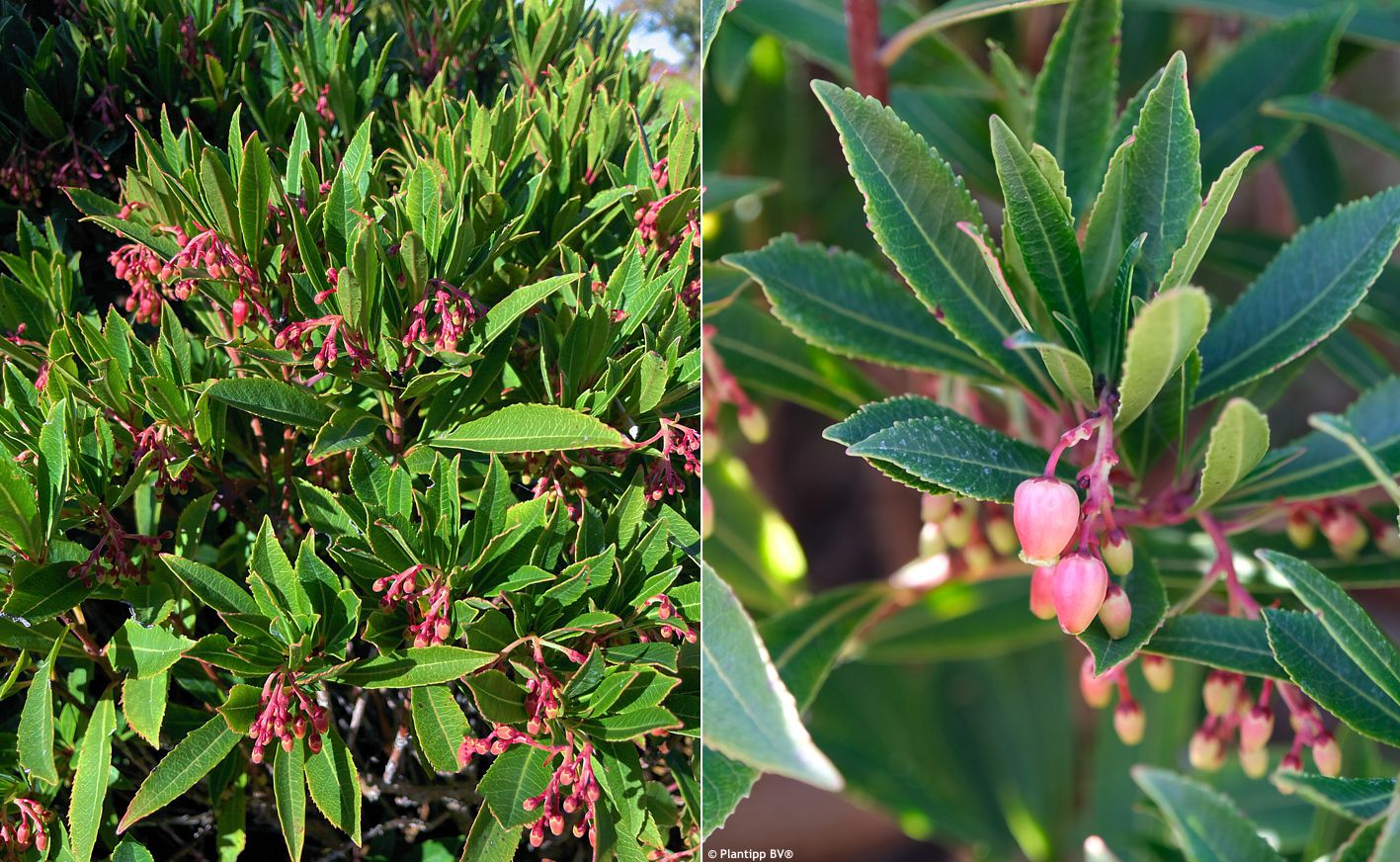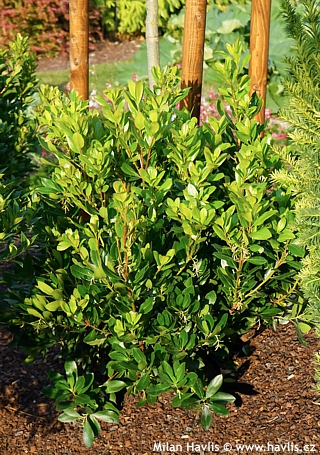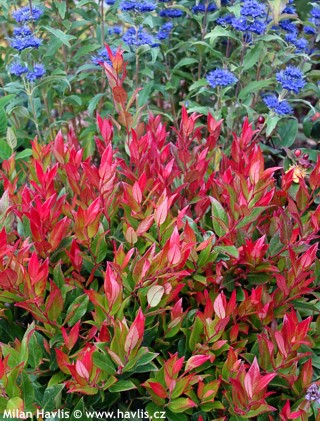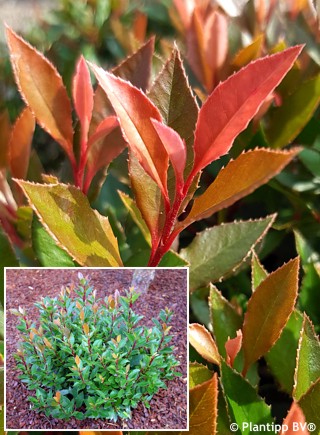Arbutus unedo 'Bocarm' MERCURIUS strawberry tree


Arbutus
Strawberry tree is another of my favourite evergreen plant from the trial field of Mediterranean plants where we test originally tender plants in C.E. continental climate. We have noticed that in the changing climate many macchia plants are exceptionally suited for milder parts of our country. Sufficient hardiness is an important feature, however, current lack of water in the ground and less rain make drought-tolerant plants like this one a desirable species even here. Arbutus unedo is one of them and the species has not proved commonly hardy when the temperature dropped below -15 °C. However, there are varieties and selections which performed a miracle!The leaves are evergreen, narrowly lanceolate, only about 4-6 cm long, acuminate, leathery, highly glossy, dark green and copper-red hues as they emerge with redder tips which look like little flames. An interesting thing: young leaves are profusely serrated at margins, but by early to midsummer the edges change to almost perfectly smooth (entire). The twigs are orange, reddish when young, and as the bark ages, it changes to a deep reddish-brown color with dark garnet-red wrinkles.
Arbutus belongs to heather family (Ericaceae) which is easy to tell looking at its flowers. They are urn-shaped, red and yellow, composed in pendent racemes, and show up from autumn until late spring, and sporadically throughout summer, too. Meanwhile mature small, spherical, and edible fruit which is bright red when mature hence the tree name. It contains as much as 20% of sugar but the taste is rather dull so it is mostly used in preserves and liquors.
Strawberry tree is one of the key features of so-called macchia vegetation found in dry and hot, rocky slopes of South Europe. Its plants cope extremely well with long-lasting drought and are usually unattacked by wild animals. Compacta remains smaller and compact, yet you can enhance its branching in spring after all frosts. I saw beautiful specimen plants trained into small multistemmed trees which reveal the beautiful red-brown bark. Select 3-5 main branches as a strong framework, remove all laterals until the top and clip its canopy into a mushroom head every summer. Thus you can achieve a beautiful Mediterranean-style jewel.
Grow it in extremely well-drained, humus rich soil in full sun or only light shade. Slightly acidic soil enhances the depth of green colour in leaves but is not essential. Just avoid compacted or water-logged ground where the roots may rot. It will need even moisture after transplanting but once established stay away from watering. We have not been able to observe its hardiness under all possible conditions but so far MERCURIUS has withstood -20 °C which makes it suitable for at least USDA 6b or warmer without any protection. Choose older plants for growing in zone 6 and provide good mulch for winter. It is pest and disease free.
Last update 21-08-2023
Goods are shipped all over Europe. For Russia and U.K. and for further details please read about SHIPPING OPTIONS HERE.
Are you interested in a serious discount for orders NOV-FEB? Check your options here.
THE PRICES INCLUDE VAT of 15%. For quick conversion you can use 1 CZK = approx. 0.04 EUR
- STANDARD QUALITY - Plants of this group are 1st class quality with number of branches and overall density adequate to their size and age, considering they were container grown.
- DE LUXE QUALITY - This label guarantees a luxurious quality of manually selected plants that, compared to their height and age, are exceptionally dense and beautiful.
- EXTRA - These plants are usually mature and bigger specimens with exceptional overall appearance.
- STANDARD (as described in the plant form) means a tree with a trunk of 190-210 cm and a crown at the top, unless specified differently. The commercial size for trees is their girth measured in the height of 1m from ground.
- HOBBY - These plants are of the same quality as our standard-quality plants but younger and therefore cheaper.
- SHRUB - a woody plant with branches growing bushy from the ground level.
- HALF-STANDARD or MINI-STANDARD - a small tree with shorter trunk, its size is usually specified.
- FEATHERED - These are trees with branches growing already from the base of the trunk and up along the stem.
- GRASSES and PERENNIALS - Sizes given usually read the diameter of the pot or the clump, as specified.

































